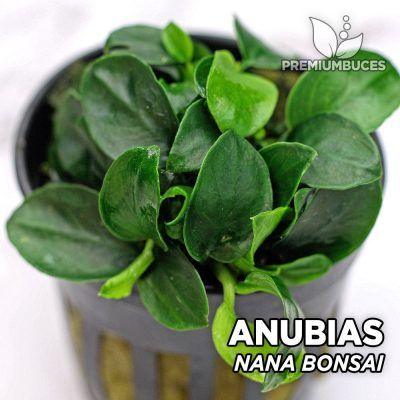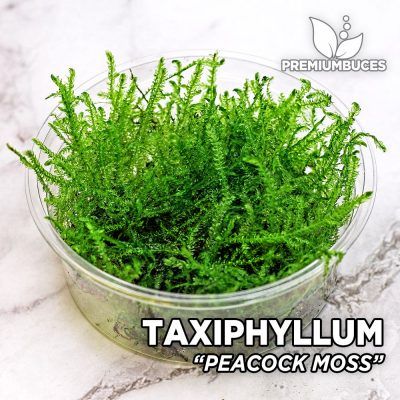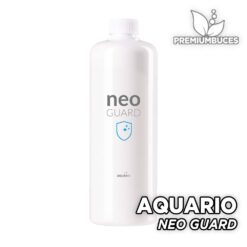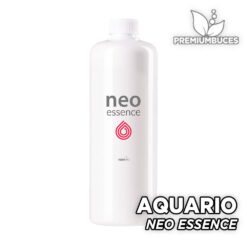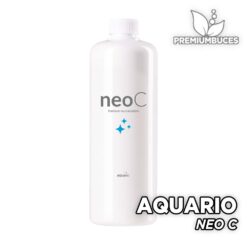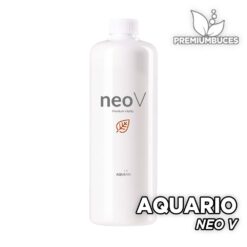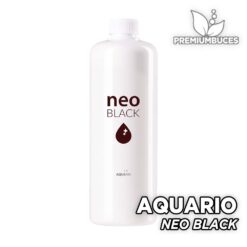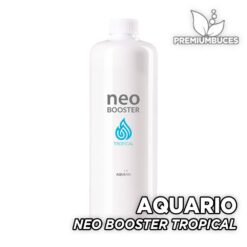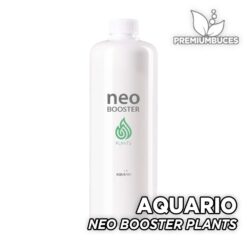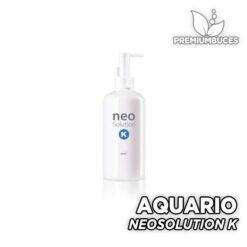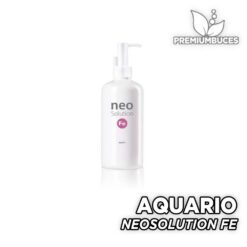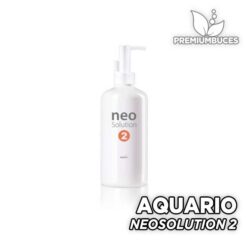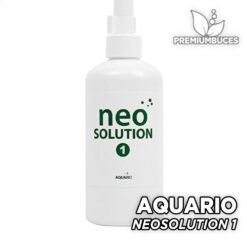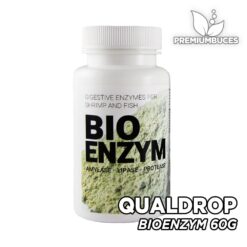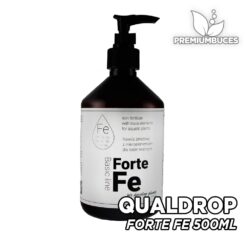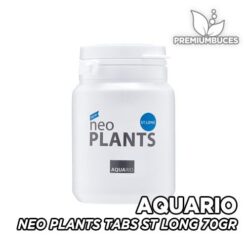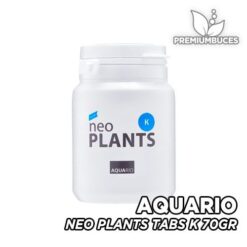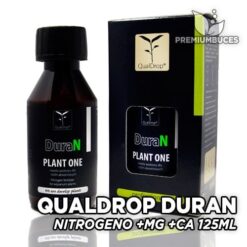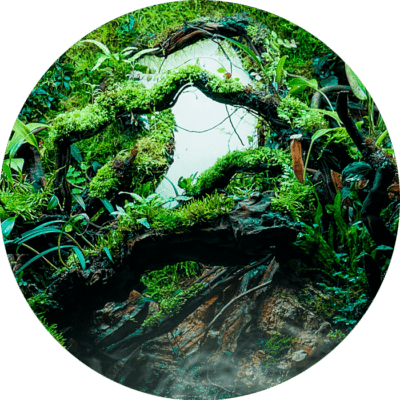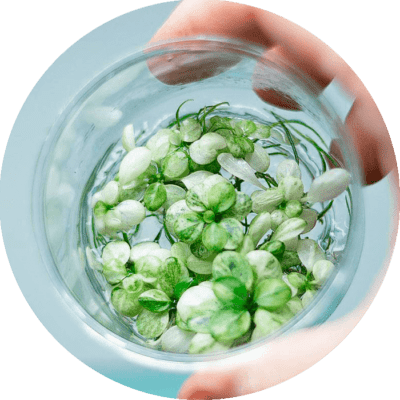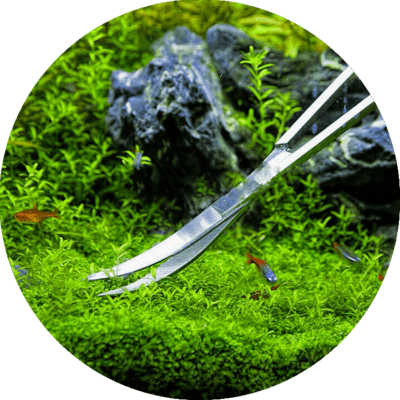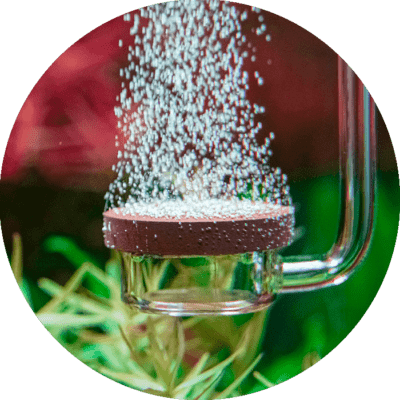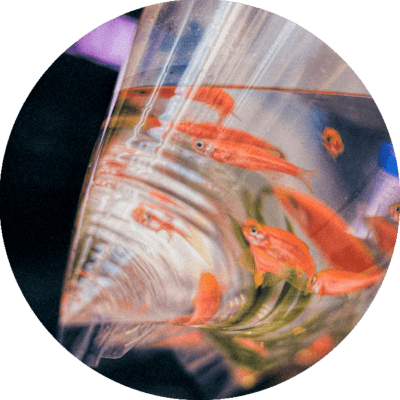You know that we usually write this type of articles to help you get to know a little more closely about those aquatic pets that so much aesthetics and comfort give to our house.
An aquarium it's relaxing and brings a lot of good things to the routine of day to day, but it is also a responsibility and you have to know how to take care of it. It is therefore important to know what species of fish are suitable for certain circumstances, such as having a large aquarium or a small one, have enough access to light or not, and have a aquarium with warmer or cooler water.
It is also necessary know a little beyond the chemistry of water where our fish will live: you already know, from other articles, the relevance of this so that everything goes well in their habitat. The vital necessity what do you suppose there is no excess ammonia and in its place there is nitrogen, there is enough oxygen and not an excess of carbon dioxide, that there is not much less a sufficient level of chlorine and that of course the water also adapts in its parameters to the needs of each fish, which are very varied depending on their origin.
To all this is added that it is also important pay attention to the main companions of our fish, Which are aquarium plants. Plants in an aquarium provide oxygen, they contribute nutrients and are allies against excess nitrate, one of the intermediate components in the process of aquarium cycling. But also the plants provide the aesthetic touch that makes aquariums a precious universe, that allows us enjoy nature more realistic without leaving home.
So that the plants are healthy and fulfill their function, both aesthetic and beneficial, they must in turn have some minimal care that helps them develop well. This is especially so if you are thinking of dedicating yourself to aquascaping or aquatic landscaping.
How can we do so plants stay healthy? What routines we must establish so that they do not cause us any problems and help our fish to live well?
THE IMPORTANCE OF PLANTS IN OUR AQUARIUM
We are not exaggerating if we say that the presence of plants in an aquarium is absolutely essential. There is no room for an aquarium where the fish are good and healthy if they don't have plants around.
No type of fish will ever achieve adapt well to a home aquarium if it does not have plants around him. The idea when we buy fish and have them in an aquarium is that they enjoy it as if they were in their natural habitat: this is why it is so important adapt all circumstances to the needs of the fish.
In the same way that we take into account the quality of the water, temperature and light for the fish is well and does not get sick or stressed, we must know that needs plants to coexist with. Although it may seem obvious, we are going to explain some of the main reasons whereby the presence of plants is mandatory in an aquarium:
THE SUPPLY OF OXYGEN
Because plants carry out the photosynthesis process, that contribute oxygen to water and without which fish cannot live. It is true that they exist today manufactured products to help the oxygen process in the water, but it really is silly to have something like that if we don't have a oxygen creating naturally.
La presence of oxygen in the water it is indeed so important to fish that many of them give immediate signs of missing, and that this situation is unsustainable. The Corydoras, which are about ideal fish to start an aquarium for the first time, they usually show oxygen starvation rising rapidly to the surface of the water, a place that is very far from its natural zone, What are the aquarium backgrounds.
HELP PREVENT ALGAE INVASION
La formation of algae in an aquarium homemade is relatively normal, but if it is not controlled can end up becoming a big problem. exist species of algae that are invasive, and if we don't do something against them, when we want to realize we can't see through the glass aquarium
The vast majority of plants also help because of the photosynthesis and your contribution of nutrients to water from the aquarium, to avoid the appearance of algae. It is possible that some will appear, but certainly not in the same way as if we did not have plants that fight against them.
FACILITATE GOOD FISH HEALTH
Not only do the plants help their companions, the fish through the contribution of oxygen and to keep the algae invasions, but because they literally give them better health. exist several studies that support the theory that in an aquarium with some healthy plants, which have their minimum insured care and grow easily, fish get sick less.
You already know that fish get sick relatively easily, and that at the least that some parameter of the water becomes unbalanced a little we will notice immediately the sequels in our pets and their behavior. That is why it is important to ensure a extra security regarding your health, and if the plants contribute this, it is a good reason to take them into account and take care of them.
THEY ARE LEADING IN SOME OF THE CUSTOMS OF MANY FISHES
As we said, the fish are completely used to the presence of plants in their natural habitat, and this makes them are part of many of their customs.
There are activities that fish doas restas breed or as take care of your future offspring, for those who need a somewhat more leafy environment. It is very common, therefore, that fish interact directly with many of the plants of our aquarium, and even spend a lot of time between them. A clear example of this is what happens with the prawns, they need the presence of very leafy plants, such as for example the mosses, to be able to carry out his life normally.
TURN OUR AQUARIUM INTO A PAINTED LANDSCAPE
Of course it must be emphasized the aesthetic importance that plants have in an aquarium. Professional people, experts in this matter, create authentic works of art with the combination of different plants, with very different aspects than turn an aquatic space into a true wonder.
El upholstery effect that create many kinds of plants, as they are the mosses, along with the various forms, structures and bases of other types of plants, such as the floating ones, they ensure that anyone who comes to our house can stay hours admiring him.
HELP IN THE AQUARIUM CYCLING PROCESS
Finally, as you already know from everything we have told you in other posts, plants have a very important role in aquarium cycling. Is biological filter the one who gets harbor bacteria who carry out the substitution of a chemical harmful for other less bad.
But, as you also know, in the cycling process el ammonium becomes first nitrate, and then finally in nitrogen. In that intermediate step in which you have to swap nitrate for nitrogen, they have one fundamental activity plants that do benefit from nitrate and help us turn it into nitrogen.
BASIC CARE OF THE PLANTS OF OUR AQUARIUM
Now that we have understood how important it is to have plants in the aquarium, accompanying our fish and providing them with endless positive points, we are going to talk about something fundamental for them: how to be cared for.
Logically the presence of the plants in the aquarium must be a healthy and strong presence. If the plants are healthy and growing quickly and easily, then they will contribute all their nutrients and virtues to the water of the aquarium and also to the fishes.
Surely you have guessed that the pruning of the plants is one of the main points in their care. There are many people who, again, believe that pruning the plants only responds to a aesthetic boost, Nothing could be further from the truth. As we will tell later, if a plant grows in excess and we can not start give us a lot of problems may affect the general well-being of the water of the aquarium.
But, in addition to pruning, what other basic care should we take into account when having plants in our aquarium? Do not be overwhelmed thinking that too many things are being added to take into account in our aquarium. Plants are very grateful and they have few demands, but we are going to tell you what these are regardless of the type of plant we want to have:
THE FIVE BASICS IN PLANT CARE: SUBSTRATE, FERTILIZER, OXYGEN, LIGHT and PRUNING
Let's start at the beginning, which is directly when we place the substrate in the bottom so that the growth of the plants begins.
THE SUBSTRATE: STARTING POINT
Both for the plants that grow on the ground like the ones grow under water, substrate is an absolutely essential material. Although in the case of those that grow underwater is especially important, Ya que plants must root well so that later they do not come loose and give us general problems in our aquarium.
El substratum will be a very important element when we start the aquarium for the first time. There we will make our plants grow, which can grow through aquarium cycling method o Through the dry start method, about which we have spoken previously in this post. It also becomes important the substrate for the fish, Especially those who live in the background as the corydoras.
For our plants to start grow healthy and become a positive element for the general environment of the aquarium, we must choose the right substrate, adapting to the needs of each type of plant. In any specialized store they will give you the information on what type of substrate is most suitable for each type of plant, and in fact in Premium Buces Shop you can find one wide variety of substrates adapted to the taste of the owner of the future aquarium and the types of plants he chooses.
FERTILIZER: AN IMPORTANT ELEMENT TO PROVIDE NUTRIENTS TO OUR PLANTS
Another element that we may need to the good growth of our aquarium plants is a allowance. There are people who believe that underwater plants do not need compost, but they are wrong. Compost is important especially for certain plants that have more demands than others.
Yes it's him first aquarium you start and you are not yet great connoisseurs of the basics of caring for plants and fish, we recommend plants that are simpler and less demanding, so that you don't have to be earrings of so many elements. For example the mosses they don't have great needs, and often do not require the use of compost.
A very important point to keep in mind for the use of compost is that it will only be used when the plants have the amount of light and carbon dioxide they demand. In the case of using the fertilizer in a aquarium where plants lack sufficient light, it would cause a adverse effect what would it bring algal blooms, so it is important to know what the exact moment to compost to our aquarium plants.
LIGHT AND OXYGEN: THE MOST IMPORTANT ELEMENTS FOR OUR HOME AQUARIUM
As you surely know, plants perform a very important natural process for the creation of oxygen, both in the air and underwater. This process is photosynthesis, and in order to be carried out, a lots of light on plants.
Since not everyone has the possibility of access to natural light from 10 to 12 hours a day, which is what plants need, the best option is purchase artificial lighting equipment. In our Online store, which also does shipments to all Spain and Europe, you can find several models of different prices.
La artificial light over our aquarium will beneficial for both plant growth and fish and their daily routine, which will make them feel like they are in their habitat. What's more, fish need oxygen to survive underwater, and it is thanks to light and photosynthesis that is achieved.
PRUNING: A HEALTHY AND AESTHETIC CARE
Finally, another of the activities that you will have to include in your routine care in the aquarium is that of prune the plants. The other important points to take care of our plants will be a constant: watch what arrives enough light, what's up enough oxygen, who the substrate is fine and what is due put compost. In the meantime pruning will be something to consider later, when the plant has grown a lot.
But we strongly recommend that you do not forget to prune when plants are very large: now we will explain why to leave the plants growing out of control can cause you more problems of those you believe.
TYPES OF PLANTS ACCORDING TO THEIR APPEARANCE
Now that we know that pruning the aquarium plants is an activity that we will have to do constantly at least once every so often, we will have to talk about how is this task done.
Pruning is quite easy, and when we have done it once, we will already be able to do it in a completely systematic way. However, among the plants that usually exist in aquariums there are very different types, and this is important for know how they should be pruned:
BULB PLATES
All the bulb plants are some of the most typical and used in home aquariums. The bulb is the root around which the whole plant is formed, and it is important to know where it is and how to treat it when we go to prune our aquatic plant.
Buy Nymphaea Tiger Lotus Red
Normally, although you will have to inform yourself more specifically about each species, they are plants that need soft water and fairly neutral pH. In addition, they are plants that need warm watersInter 22 and 28 degrees centigrade approximately.
For prune plants that are bulbous, what you have to do is pull them very carefully from the bulb. If we start it from higher, we will leave remains in the bulb that can harm the new leaf growth.
Act quickly. tear off the leaves that are older, leaving the new ones to flourish and grow healthier.
STEM PLANTS
El stem is another way of root growth of some of the most common plants in home aquariums. They are plants that grow very fast and grow along, so they are usually used for specific areas within the aquarium: usually the back and the middle area.
Buy Rotala Orange Juice
These types of stem plants usually create the upholstery effect that many times is sought at the time of decorate an aquarium. The moss, although with a different way of growing since they do not have roots as such, they also have that thick effect which gives our aquarium the isolated and natural effect so beautiful.
When a stem plant starts to grow too much and the time comes to have to prune it, what we have to do is directly cut the stem to the height we want: normally you have to see from which part of the plant is beginning to spoil. But it may also be the case that it has grown so much that we want cut it almost whole and thus watch it grow again. In this case you have to cut directly between two stem nodes, in one of the first if we are going to prune it completely. To cut we will need some very sharp scissors and do it by putting a 45 degree angle.
ROSETA PLANTS
All the rose plantsta are one of the most peculiar of all that we can have in our aquarium. They are named for the so characteristic shape of its leaves, and because they don't have neither stems nor initial bulb at the top, but the leaves emerge directly and at the same time from the substrate.
Buy Anubias Nana Bonsai
Rosette plants grow and are distributed in a circular way, and this makes older leaves are placed outside of the circle, and newer leaves inside. This makes us very easy to do the corresponding pruning, because we will simply have to cut outer leaves and leave the internal ones to grow again.
One of the most known types of plants within those that have the rosette growth are Anubias, one of the plants that we like the most in Premium Buces. They are very easy to care for and can grow very quickly, as you can read in this article in which we tell you the most important things about them.
FLOATING PLANTS
Floating plants are a very unique and characteristic aquarium plant species, and that as its name indicates they usually grow through roots in such a way that they stay on the surface or in the center of the water of the aquarium as if they were floating.
Buy Phyllanthus Fluitans
Some people believe that floating plants should not be subject to anything, but this is not so: we have to attach its roots to a trunk or rock, or nearby decorative element so that although they float, they are stable. If we do not hold them, what will happen is that with the current of the water and the movement of the fish, the plants they will come off and move around the aquarium, being able to suffer damages.
La most positive part of having floating plants in the aquarium is that they are the most you can physically tell which leaves are spoiling and which ones are blooming. Thus, the task of pruning will be very easy: with help from a network or even with own hands we remove the worst-looking leaves and leave those that are growing well. You have to be careful when it comes to cut the roots, they are thin but sometimes it happens that we can mistake them for the roots of the leaves next door and spoil some healthy ones.
RHIZOME PLANTS
Another way to root growth that can be seen the most among the plants in home aquariums consist of those of rhizome. The rhizomes are underground stems of some plants, which instead of growing and developing vertically on the substrate, they do it horizontally.
Buy Bucephalandra Solid Blue
It usually happens that sometimes when we go to a specialized store to acquire our plants for the aquarium We choose them based on their appearance and what we like, and we take less into account the ease or difficulty when cultivating it. We comment on this now because rhizome plants They are always the easiest, almost they do not need care or any type of extra nutrient so that they grow quickly and healthy.
Other window of rhizome plants is with respect to pruning. When growing horizontally, it is very easy to cut the leaves that have grown too much I that they are spoiling without damaging, or even getting close to, the other plants whose rhizome is fine and should not be touched. The leaves are cut from the rhizome, but being very careful of leave it intact with the root that joins it with the other rhizomes, in order to allow plants to continue growing in the future.
Mosses
If you have read other post of our blog in Premium Buces, you will know perfectly well that mosses are one of our favorite plants aquariums and the ones that we usually recommend to people who are just starting out.
Buy Taxiphyllum Peacock Moss
Mosses they combine many virtues that make them perfect for an aquarium: first of all they are easy, undemanding and tend to grow with almost no need specific. They have no roots y grow directly on surfaces found by spores. This makes practically in any humid and somewhat gloomy environment, the moss will grow without problems.
In addition, the mosses they have a huge variety of appearances, colors and shapes to grow horizontally or vertically. This gives us the possibility of adapting them to our aquarium according to the aesthetics that we want to acquire.
And, in addition to all these advantages that make some mosses the perfect companions for our fish, there is also the fact that moss pruning is very easy to carry out. As they have no roots, The moss can be trimmed wherever we see fit, giving it the shape that suits us according to the characteristics of our aquarium.
This is not to say that mosses need less pruning. than other plants, because in fact for them it is also very necessary. In the case of moss Christmas Moss, which is one of the most used, the lack of pruning can lead to some parts of the moss are dying without us noticing. Simply, the task is enormously simple and it can be adapted to our taste and that of our fish, but this does not mean that we must not stop taking it into account.
WHY IS PRUNING SO IMPORTANT?
As you will see, the presence of plants in the aquarium is essential, and we want to make this idea very clear to all people who simply consider that an aquarium is formed based on having many or few fish.
We have already told you at the beginning of the article: plants are the lung of the aquarium, plus favor the life of fish in many other respects. We must not think that they are a huge workload that will take time and dedication from our fish pets, but neither stop take into account what your minimum and basic needs are.
One of these basic needs, of which we have spoken is pruning. Pruning regardless of what type of plant we have in our aquarium: be it plants bulb, stem, rosette, rhizome or moss, all of them will have to be taken care of once they have grown too and are starting to be uncomfortable for the rest of your life underwater.
But surely you are wondering: Why is pruning so important? Do you only respond to the need for plants not to occupy all the space, and the fish also have free places in the aquarium in which to swim and move without the interference of plants?
The answer is no, pruning is a necessity that favors plant health, and without it, we will not be able to have plants that grow well. If we don't have some plants that grow well, the problems will start in a general way in our aquarium: fish can get sick and the water can become cloudy and lose the parameters that we have had so hard to achieve.
Y How else does pruning favor plants?? Well, we are going to tell you about it next, so keep reading the second part of the article.
AID TO THE REPRODUCTION OF PLANTS
Anyone who has owned an aquarium before, or who has had plants in their own home, without being underwater, knows that plants often do not grow in a regular and balanced way. Many times one part of the plants grows more than the other, or if it is in our aquarium, it grows in one of the areas leaving the other sparsely populated or bald.
A populate the emptiest areas of the aquarium according to our criteria and taste can help us precisely the pruning of the original plant. Plants have the ability to reproduce again by cuttings, that is, through remains of the original plant planted again. When an aquarium plant has grown too much in one area, and yet another has become quite empty, what we can do is trimming stems or roots that are healthy (not those that are damaged, which we will have to discard) and that have grown a lot, and replant them in the empty area.
In this way we will achieve both: prune the overgrown plant and that can start to give us problems, and reuse this pruning for new plants in some areas of the aquarium that we want to fill.
HEALS THEM AND AVOID POSSIBLE INFECTIONS
Although all the reasons why you have to prune the aquarium plants they are important, this point is, from our point of view, one of the ones that we must take into account the most.
There are plant species that grow very large, especially if they are under a large amount of hours of light and with conditions that favor its rapid growth. For example, it happens a lot with the moss Christmas Moss. When a plant, like this, grows thick and robust, what can happen is that if we let it grow freely, there will be a moment when some areas of the plant (the centrals, mainly) are hidden from our view from outside the aquarium.
This makes those areas inside the plant on which it has grown are not in the same conditions as the external areas: they do not receive the same light, nor the same nutrients. Nor can they be cleaned just as easily, and in the event that they begin to rot or arise some infectionsWe won't even notice It may be the case that the infection causes a sudden drop or rise of some chemical components of the water and that we are not even able to identify the origin, because we do not know that the interior of the plant is beginning to spoil.
So that all this does not happen pruning of all plants is necessary. If we do it on regular basis, we can go knowing when a plant is growing too much or spoiling and avoid the consequent problems.
HELP THEY LOOK GOOD AND GIVE THE AQUARIUM THE LOOK WE ARE LOOKING FOR
Although we have already told you that the pruning of aquarium plants is not only for aesthetic purposes, the point is that are another reason to take into account to know why we should prune.
When we planted for the first time some species, at first everything will be illusion and wait, seeing how little by little they are making room in our aquarium. But there will be a time when growth begins to pose a problem: An aquarium where the plants occupy more than half the water, where the fish can hardly be seen because they do not have free spaces where they swim, and where they also some plants may detach from their anchor (it happens with floating plants, for example) is an aquarium that is spoiling, and the only solution for this is prune in time.
DO ALL AQUARIUM PLANTS NEED TO BE PRUNED?
It is possible that after having read the entire article, having understood what difference is there between some plants and others when pruning and why is it really activity and routine of pruning necessary, you are wondering: Do all aquarium plants need to be pruned?
The answer is yes, that all the plants that we have in our aquarium must be pruned at some point, because will always grown. If a plant does not grow, something is not going well and then you will have to solve that problem before considering how to cut it. What is true is that not all plants should be pruned with the same frequency, nor with the same care.
There are plants that only need to be pruned when their growth is out of control and they are starting to take up too much space, as can happen with the mosses, which at one point will leave areas of the moss not seen and this can bring us problems.
There are, however, other plants that should be pruned automatically when they reach a specific measure: for example, this is the case with all plants that are floor coverings and they usually grow more horizontally than vertically. As they are so thick, and they are usually used to cover floors and specific areas of the aquarium, if we let them grow too much will become an absolutely impenetrable part, where we will not see what happens due to its depth. So that, plants with upholstery effect how can they be some mosses or those of the family of Cuba, They must be automatically pruned every time they reach 2 centimeters long.
As you will see, pruning is not simply a thing to be decided by eye, but we must know what will be the form of plant growth that we are acquiring in specialized stores. So we will know how to prune it according to its root typeAlso how often do you have to prune it y with what material, for example with more curved or sharper scissors or with the help of a network.
PLANTING: AFTER PRUNING
One of the main reasons that can give us ideas about the importance of pruning in aquarium plants, we have already told you, and it is that favor the reproduction and growth of new plants.
Maybe at a certain time when you have to prune a plant that has grown too much, you do not need those remains for no specific place in the aquarium, but yes you will need it in the future. Although always you can go to a store to look for new plants for areas of the aquarium that are left empty, or for new decorations in case you are trying to make a waterscape or aquascaping, the truth is that also you can try to preserve the plant remains that are healthy and that you have cut back on the pruning routine.
El replanted pruning It is another matter apart that deserves more information in another article. We have already told you the difference there is when pruning between plants that are stemmed, bulb, rhizomes, rosettes or mosses. This same difference applies to the planting these plants, especially if it is a replanting by means of the remains that we have cut out.
If you are thinking of prune precisely to be able to populate another area of the aquarium, inform you well about how to trim these cuttingsOn how to plant them and in what way in order to obtain maximum growth and fill the part that we considered the most empty.
As we always tell you, having an aquarium is a wonderful hobby, what are you going to give us great moments of pleasure and entertainment seeing how fish live well and how plants grow and decorate our aquarium. But it is also a topic to be informed about so that everything goes well and problems do not come to us. Take care of the plants as you do your pets, and then the aquarium will only be a source of entertainment, fun and accomplishment.
For any other duda, relevant information on this topic and others, you can write us through the comments. And if you want to know all our specialized products for the aquarium world, you can take a look at our online store and social media.



